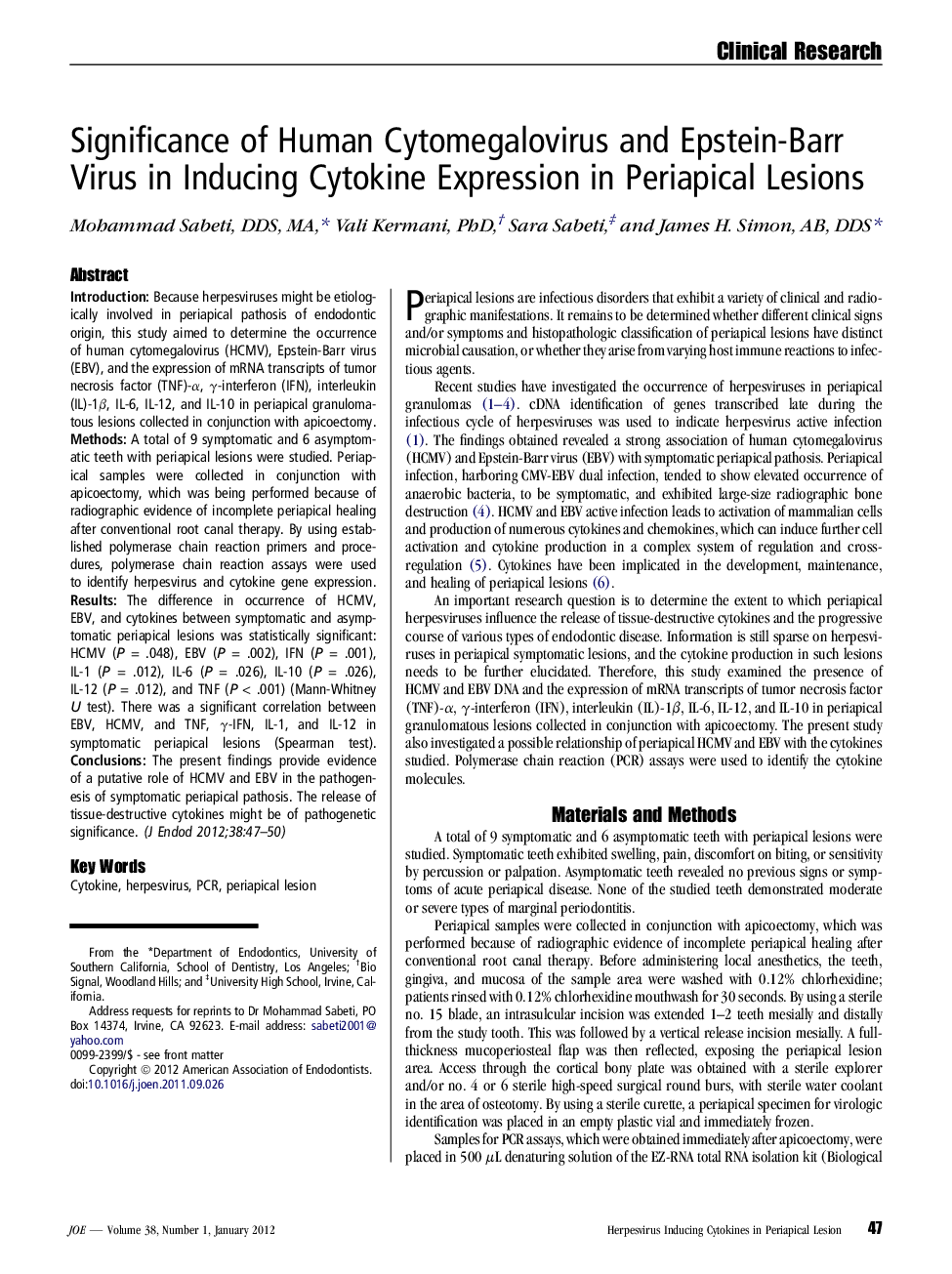| Article ID | Journal | Published Year | Pages | File Type |
|---|---|---|---|---|
| 3150444 | Journal of Endodontics | 2012 | 4 Pages |
IntroductionBecause herpesviruses might be etiologically involved in periapical pathosis of endodontic origin, this study aimed to determine the occurrence of human cytomegalovirus (HCMV), Epstein-Barr virus (EBV), and the expression of mRNA transcripts of tumor necrosis factor (TNF)-α, γ-interferon (IFN), interleukin (IL)-1β, IL-6, IL-12, and IL-10 in periapical granulomatous lesions collected in conjunction with apicoectomy.MethodsA total of 9 symptomatic and 6 asymptomatic teeth with periapical lesions were studied. Periapical samples were collected in conjunction with apicoectomy, which was being performed because of radiographic evidence of incomplete periapical healing after conventional root canal therapy. By using established polymerase chain reaction primers and procedures, polymerase chain reaction assays were used to identify herpesvirus and cytokine gene expression.ResultsThe difference in occurrence of HCMV, EBV, and cytokines between symptomatic and asymptomatic periapical lesions was statistically significant: HCMV (P = .048), EBV (P = .002), IFN (P = .001), IL-1 (P = .012), IL-6 (P = .026), IL-10 (P = .026), IL-12 (P = .012), and TNF (P < .001) (Mann-Whitney U test). There was a significant correlation between EBV, HCMV, and TNF, γ-IFN, IL-1, and IL-12 in symptomatic periapical lesions (Spearman test).ConclusionsThe present findings provide evidence of a putative role of HCMV and EBV in the pathogenesis of symptomatic periapical pathosis. The release of tissue-destructive cytokines might be of pathogenetic significance.
